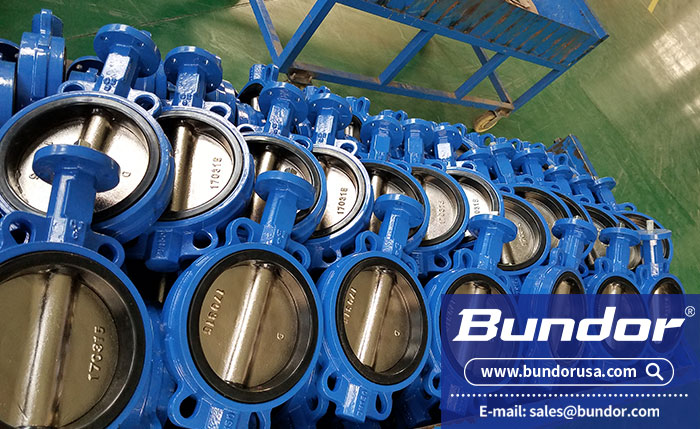Butterfly valve application and selection principle
The butterfly valve, also known as the flap valve, is a simple regulating valve and can also be used for switching control of low pressure pipeline media. A butterfly valve is a valve in which a closing member (valve or disc) is a disc that rotates around the valve shaft to open and close, and mainly cuts and throttles the pipe. The butterfly valve opening and closing member is a disc-shaped butterfly plate that rotates around its own axis in the valve body to achieve the purpose of opening and closing or adjusting. The butterfly valve is suitable for regulating and cutting off various corrosive and non-corrosive fluid media in the engineering systems of furnace, gas, natural gas, liquefied petroleum gas, city gas, hot and cold air, chemical smelting and power generation and environmental protection. The flow of the medium.

Where the butterfly valve is applicable:
The butterfly valve is suitable for flow regulation. Since the pressure loss of the butterfly valve in the pipeline is relatively large, about three times that of the gate valve, when selecting the butterfly valve, the influence of the pressure loss of the pipeline system should be fully considered, and the pressure of the butterfly plate to withstand the pressure of the pipeline medium should be considered. Sex. In addition, the limits of the operating temperature of the elastomeric seat material at elevated temperatures must also be considered.
The butterfly valve has a small structural length and overall height, a fast opening and closing speed, and good fluid control characteristics. The structural principle of the butterfly valve is most suitable for making a large diameter valve. When a butterfly valve is required for control flow, the most important thing is to properly select the size and type of butterfly valve so that it can work properly and efficiently.
Generally, in throttling, adjustment control and mud medium, the structural length is required to be short, and the opening and closing speed is fast (1/4r). Low pressure cutoff (small pressure difference), butterfly valve is recommended.
In the double position adjustment, the channel of the shrinkage, low noise, cavitation and gasification phenomenon, a small amount of leakage to the atmosphere, when there is abrasive medium, the butterfly valve can be selected.
In the case of throttling adjustment under special working conditions, or requiring strict sealing, or severe wear, and the use of butterfly valves under low temperature (deep cold) conditions, special design of metal sealing belt adjustment device for three eccentric or double eccentric special Butterfly valve.
The midline butterfly valve is suitable for fresh water, sewage, seawater, salt water, steam, natural gas, food, medicine, oil and various types that require complete sealing, zero gas test leakage, high life expectancy, and working temperature between -10 and 150 °C. Acid and alkali and other pipelines.
The soft seal eccentric butterfly valve is suitable for two-way opening and closing and regulation of ventilation and dust removal pipelines. It is widely used in gas pipelines and waterways of metallurgy, light industry, electric power and petrochemical systems.
Metal-to-metal wire sealed double eccentric butterfly valve is suitable for urban heating, steam supply, water supply and gas, oil, acid and alkali pipelines, as a regulating and shut-off device.
Metal-to-metal surface sealing triple eccentric butterfly valve can be widely used in petroleum, petrochemical, chemical, metallurgical, electric power, etc., as gate valves, globe valves, etc., in addition to being used as a large-scale pressure swing adsorption (PSA) gas separation device program control valve. A good alternative.
Butterfly valve selection principle:
1. Since the butterfly valve has a relatively large pressure loss relative to the gate valve, it is suitable for piping systems where the pressure loss is not critical.
2, because the butterfly valve can be adjusted by flow, it is suitable for use in the pipeline that needs to adjust the flow.
3. Due to the structure of the butterfly valve and the limitation of the sealing material, it is not suitable for high temperature and high pressure piping systems. The general working temperature is below 300 °C, and the nominal pressure is below PN40.
4, because the butterfly valve structure length is relatively short, and can be made into a large diameter, so in the case of short structural length requirements or large diameter valves (such as DN1000 or above), butterfly valves should be used.
5. Since the butterfly valve can be opened or closed only by rotating 90°, the butterfly valve should be used when the opening and closing requirements are fast.
 简体中文
简体中文 Русский
Русский Español
Español Bundor - Butterfly, Gate, Check, Ball, Globe Valve Manufacturer, Supplier & Distributor
Bundor - Butterfly, Gate, Check, Ball, Globe Valve Manufacturer, Supplier & Distributor
